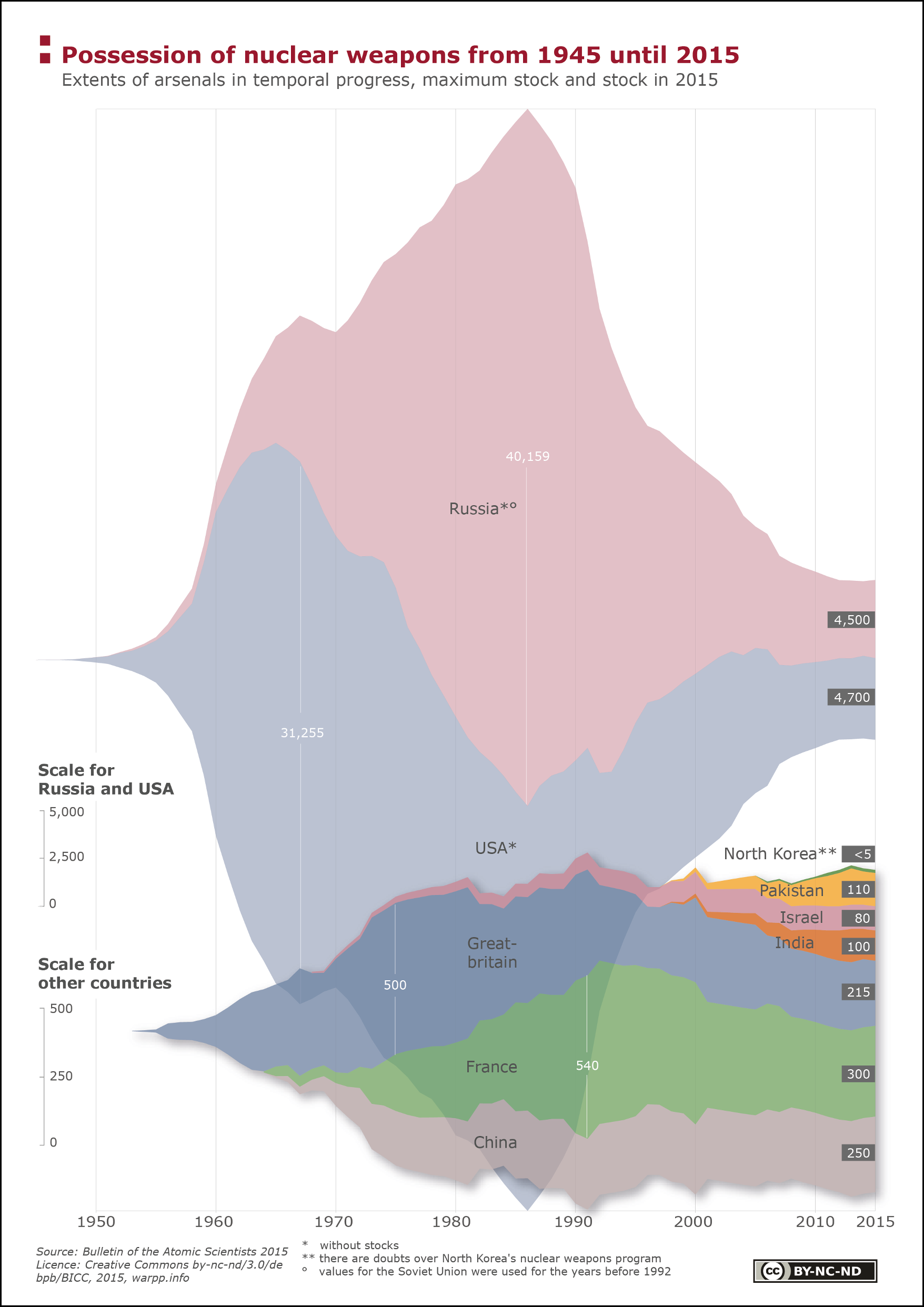Possession of nuclear weapons 1945-2016

The illustration shows the possession of nuclear weapons of the so-called nuclear powers between 1945 and 2016 It shows the two largest nuclear powers, the United States and Russia (top) and the relatively smaller nuclear powers Great Britain, France, China, Pakistan, Israel and India (bottom). The white line marks the date when a state reached its largest number of nuclear weapons, and the white number on the dark background on the right shows the most recent number of nuclear weapons (2016). This allows you to view the possession of nuclear weapons over time.
Facts
Since 1945, more than 125,000 nuclear weapons have been produced, 97 of which in the United States and Russia. Since 1986, the number of operational nuclear weapons worldwide has decreased, as the United States and Russia have bound themselves in disarmament agreements to cut down the number of active nuclear weapons. But the speed with which nuclear weapons are withdrawn from service is quicker than their disposal so that high inactive holdings of nuclear weapons exist. The number of countries in possession of nuclear weapons is rising, and all nuclear powers are modernizing their stockpiles so that today, one is just as far away from total disarmament as before.
Nuclear weapons have so far only been used twice, in 1945, when the United States dropped one atomic bomb each over the Japanese cities of Hiroshima and Nagasaki.
Terms, notes on methodology or reading aids
As the number of nuclear weapons in Russia and the United States is so high, it has been shown at a different scale than that of the remaining counties
Nuclear weapons are weapons of mass destruction that derive their destructive force from nuclear reactions, the fission or fusion of the atom. To produce a nuclear weapon, either highly enriched uranium or separated plutonium is needed. Depending on the bomb size and the location of the explosion (in the air or on the ground), one single nuclear bomb can contaminate and/or destroy large areas and kill vast amounts of people. So-called radiological dispersal devices ('dirty bombs') do not fall under the category of nuclear weapons, as their destructive power stems from conventional explosives that scatter radiological material without causing either fusion or fission.
Data sources
Bulletin of the Atomic Scientists The magazine "Bulletin of the Atomic Scientist" was first published in 1945. Today, every two months, the influential online version that reports on current and broad nuclear topics is released. These topics comprise nuclear energy, nuclear weapons, international treaties and nuclear terrorism, amongst others. As concerns figures on the holdings of nuclear weapons one must be aware that this source only provides information on the military holdings of the United States. Information on Russian nuclear weapons also contain those that have been decommissioned. This results in a major difference in weapons holdings between the United States and Russia.
Bulletin of the Atomic Scientists: Global Nuclear Weapons Inventory 1945-2013
Bulletin of the Atomic Scientists: Deployments of Nuclear Weapons 2014





